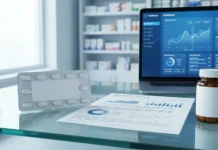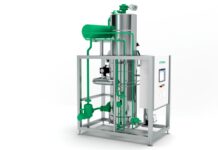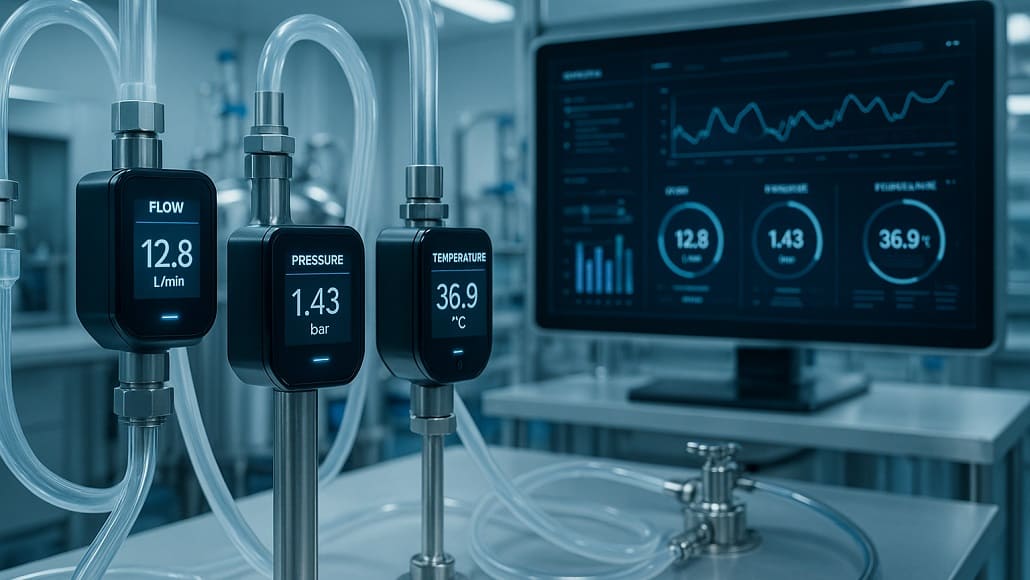Smart Sensors & Monitoring in Fluid Systems in Biomanufacturing
Precision and consistency are not just wanted in the rapidly changing biomanufacturing sector; they are absolutely vital.┬Ā The function of smart sensors and monitoring systems in fluid management has grown basic as production scales up and regulatory standards become more stringent.┬Ā These technologies are now fundamental components that protect product quality, maximise operating efficiency, and provide real-time process control rather than optional add-ons.
Fluid systems are the lifelines of bioprocessing from microbial fermentation to cell therapy manufacturing.┬Ā But fluid factors like flow rate, pressure, temperature, pH, conductivity, and dissolved gases are all prone to change; such changes can directly affect yield, stability, and purity.┬Ā Smart sensors in biomanufacturing are integrated into the system let these variables be exactly tracked, hence producing a digitally responsive manufacturing environment.
The Shift from Analog to Smart Fluid Monitoring
Critical parameters were measured using traditional biomanufacturing using analogue instruments and occasional manual sampling.┬Ā Although these techniques were somewhat successful, they sometimes meant delays in spotting abnormalities and ran the risk of human mistake or contamination during sampling.┬Ā By contrast, smart sensors in┬Ābiomanufacturing run autonomously and continuously inside closed systems, therefore removing these gaps and hazards.
This shift has been catalyzed by several intersecting developments:
- Miniaturization of Sensor Technologies: Advances in MEMS (microelectromechanical systems) and microfluidics have allowed very accurate sensors to be inserted into small flow routes or connectors without affecting the system.
- Integration with Process Control Systems: Designed to integrate straight into SCADA (Supervisory Control and Data Acquisition), DCS (Distributed Control Systems), or cloud-based dashboards, today’s smart sensors enable synchronised automation and trend monitoring.
- Real-time Analytics and AI Readiness: Unlike their analogue predecessors, smart sensors not only collect data but also contextualise it.┬Ā Predictive maintenance, early fault identification, and AI-driven optimisation are all made possible by this approach.
Key Sensor Types in Fluid Monitoring
A modern fluid path combines several sensor kinds to track process and product characteristics.┬Ā Every one of them has a particular part to play in maintaining the integrity of the biomanufacturing environment.
- Flow Sensors: Enable to keep steady fluid movement by detecting real-time volumetric or mass flow rates.┬Ā In perfusion cultures and chromatography procedures, where even tiny variations might influence separation efficiency or cell viability, they are essential.
- Pressure Sensors: Variations in pressure could indicate pump failures, leaks, or obstructions.┬Ā By means of smart pressure sensors, automated actions like valve closing or pump recalibration may be set off, hence avoiding product loss or contamination.
- Temperature Sensors: Many biologics are temperature sensitive.┬Ā During transit, storage, or reaction stages, smart thermal sensors guarantee the fluid stays within the needed temperature range.
- pH and Conductivity Sensors: Buffer preparation, media composition, and downstream purification all depend on pH and conductivity sensors.┬Ā Smart versions can offset changes in salinity, ion concentration, or drift brought on environmental pollution.
- Dissolved Oxygen (DO) and Carbon Dioxide (CO2) Sensors: Especially in cell culture, dissolved oxygen (DO) and carbon dioxide (CO2) sensors help track metabolic activity, so guaranteeing that cellular surroundings stay within optimal physiological ranges.
- Turbidity and Optical Sensors: Often indicating microbial proliferation, aggregation, or precipitation, they measure particles or changes in fluid purity.┬Ā In clarity testing and filtration, they are particularly helpful.
Every sensor not only offers its own data stream but also, when coupled, allows a complete, real-time perspective of the bioprocessŌĆöthereby producing a “digital twin” of the actual fluid system.
Benefits of Smart Monitoring Systems in Biomanufacturing
Implementing smart monitoring technologies in fluid systems offers biomanufacturers across operational, quality, and compliance aspects revolutionary advantages.
- Improved Product Consistency and Yield: By continuously monitoring parameters and correcting deviations instantly, manufacturers can significantly reduce batch-to-batch variability.
- Reduction in Manual Sampling and Human Error: In-line, closed-system sensors reduce the need for invasive sampling.┬Ā This not only lowers the risk of pollution but also releases qualified labour for other valuable activities.
- Enhanced Process Understanding and Documentation: Rich data streams gathered over time let engineers optimise operations, run root cause analysis, and create thorough quality reports.a boon for regulatory audits.
- Predictive Maintenance and Asset Longevity: Smart sensors in biomanufacturing can identify early indications of component wear or process deviation, therefore encouraging maintenance only when required rather than on fixed schedules.┬Ā It increases equipment life and lowers downtime.
- Remote Monitoring and Scalability: The capacity to monitor operations remotely across several sites is priceless in the age of dispersed manufacturing and CDMOs.┬Ā Cloud-integrated smart systems provide centralised control and supervision.
Implementation Considerations and Challenges
Although the advantages are considerable, installing smart sensor systems in fluid pathways also creates difficulties that need for strategic planning:
- Sensor Calibration and Drift: Smart or not, sensors are prone to drift with time.┬Ā Manufacturers have to provide strong calibration procedures and think about redundancy for important metrics.
- Data Integration and Standardization: Various vendors sometimes utilise private protocols or formats.┬Ā It is absolutely vital to guarantee interoperability between systems and smooth data integration into central dashboards.
- Cost and ROI Justification: Smart sensors are pricier than analogue substitutes.┬Ā The return on investment, nevertheless, gets interesting when considered against possible savings from lower waste, better yield, and less batch reworkŌĆöespecially in high-value bioproduct production.
- Validation and Regulatory Acceptance: Sensor performance has to be confirmed inside GMP systems.┬Ā Though documentation requirements have to be kept painstakingly to guarantee compliance, regulators want digital traceability more and more.
- Cybersecurity and Data Integrity: Protecting data integrity from both internal and external threats becomes a priority as systems migrate towards cloud and networked environments.
Looking Ahead: Toward Adaptive Biomanufacturing
Smart sensor technology is on a path towards even more autonomy and accuracy.┬Ā The future will probably have systems that not only detect changes but also respond intelligently by modifying flows, recalibrating systems, or perhaps contacting quality teams proactively.┬Ā Such flexible systems are a step closer to the idea of continuous bioprocessing and lights-out manufacturing.
At the same time, advances in materials science are allowing gamma-stable, non-fouling sensor materials fit for single-use assemblies, hence removing conventional trade-offs between disposability and precision.┬Ā In modular fluid handling systems, smart sensors will be native components, hence changing the function of the operator from process executor to data-driven decision maker.
Conclusion
Smart sensors in biomanufacturing are doing more than just monitoring in the sector; they are facilitating change in an ever more complicated environment.┬Ā Manufacturers have a degree of process visibility and control by including intelligence into fluid systems that was unthinkable only ten years ago.
This is not merely about better screen numbers.┬Ā It is about creating a culture of precision manufacturing, batch release streamlined, patient safety improved, and being confident enough to make real-time judgments.┬Ā Intelligent monitoring is no indulgence but a sheer necessity for companies wanting to thrive in the era of fast-track regulatory pathways and personalized medicines.




















